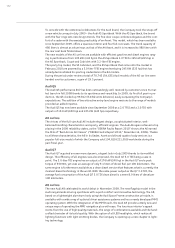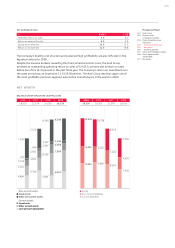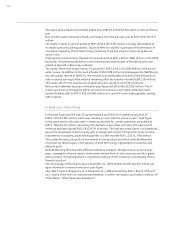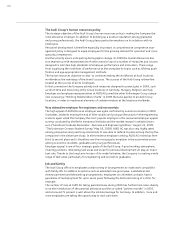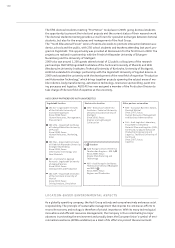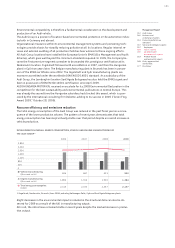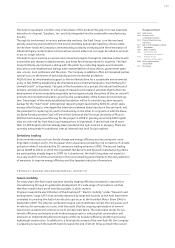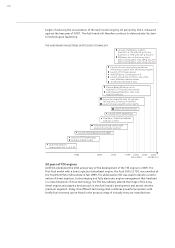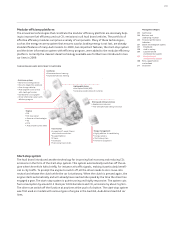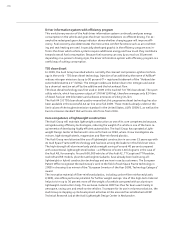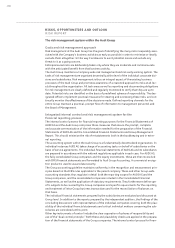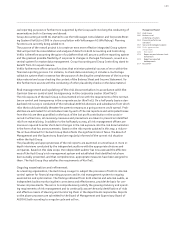Audi 2009 Annual Report Download - page 165
Download and view the complete annual report
Please find page 165 of the 2009 Audi annual report below. You can navigate through the pages in the report by either clicking on the pages listed below, or by using the keyword search tool below to find specific information within the annual report.
162
ENVIRONMENTAL STRUCTURAL DATA 1)
2009 2008
VOC emissions 2) t 1,750 1,928
Direct CO2 emissions 3) t 188,339 200,249
Volume of waste water m³ 1,708,808 1,852,538
Fresh water purchased m³ 2,702,821 2,905,370
Total volume of waste t51,896 63,520
of which recyclable waste t42,624 54,168
of which disposable waste t9,272 9,352
Metallic waste (scrap) t282,517 328,231
1) Ingolstadt, Neckarsulm, Brussels (excluding Volkswagen Polo), Győr and Sant’Agata Bolognese plants
2) VOC emissions (volatile organic compounds): This figure comprises emissions from the paint shops, shipment preservative
treatment for motor vehicles, test rigs and other facilities.
3) Direct CO2 emissions: This figure is made up of CO2 emissions generated by the use of fuel at the plant, and CO2 emissions
produced by the operation of test rigs.
In order to conserve energy and therefore reduce emissions, the potential for saving energy is
already considered during the planning phase. Permanent improvements in the efficiency of
manufacturing facilities and utilities are therefore also of considerable importance. Technical
solutions such as a modern combined heat, power and refrigeration plant at Ingolstadt as well
as heat recovery systems and the use of district heating have proved very successful for the Audi
Group. The signing of the new district heating contract for the Ingolstadt plant in fall 2009
means that the amount of waste heat from neighboring industrial enterprises being used is set
to continue rising.
Another example of how resources can be used more efficiently is the adoption of innovative
joining techniques in body manufacturing, such as spot welding, laser welding and bonding
techniques. Each individual technique is matched with specific joining processes in order to find
the most efficient solution for each process. Reductions in the consumption of operating mate-
rials and energy can thus be realized. The changeover from pneumatic welding tongs to a ver-
sion powered by electric motors has yielded a significant efficiency gain and improved the qual-
ity of weld points. For exactly the same level of use, energy consumption and therefore also CO2
emissions are cut by around 50 percent. Based on these positive findings, this technology will
now be adopted for all new projects in the Audi Group. Countless other individual measures such
as ventilation and lighting control on demand and optimized machine operation all contribute
towards ongoing, systematic reductions in energy use.
One pilot project on which AUDI AG is currently collaborating with the Technical University of
Munich involves recycling the raw material nickel from a pretreatment stage of the painting
process. The goal of this research project is to return the material to the manufacturing process,
thereby significantly reducing the amount of waste. Another pilot project within the Audi Group
has set out to investigate the biological treatment of rinsing effluent from the paint shop, again
with the aim of reducing the volume of waste. Other energy savings within the Audi Group are
being continually monitored from an economic and ecological viewpoint as part of potential
studies. In addition to the increased use of district heating, this includes the potential use of
pioneering renewable energy sources such as geothermal energy.
Environmental protection programs and public relations work
Another way in which the Audi Group exercises its environmental responsibility is through its
extensive involvement in numerous initiatives.
The Company for instance maintains a constant dialog with politicians, associations, govern-
ment agencies and journalists about its environmental philosophy, and is also deeply involved in
joint projects between government and industry. Its repeated participation in the Bavarian Envi-
ronmental Pact emphasizes how the Audi Group’s environmental commitment goes far beyond
the statutory requirements. It believes this is the only way to achieve the goal of enhanced inno-
vativeness harnessed to an environmentally acceptable and thus sustainable form of economic
growth. As a founding member, the Audi Group has for many years been contributing to forums
on a variety of topics such as the Integrated Product Policy (IPP) or the management systems.


